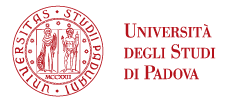Unveiling Etna's Hidden Plumbing: New Study Maps Volcano's Magma Network

Understanding the internal dynamics of volcanoes is crucial for predicting eruptions. When magma moves underground, it creates fluid-filled fractures that affect how seismic waves travel through the rock. By analyzing these wave patterns, scientists can infer the internal structure of a volcano.
A new study, led by the Department of Geosciences of the University of Padova in collaboration with INGV (Catania), applied this technique to create a detailed 3D map of Mount Etna's internal structure. The scientists analyzed the speed of seismic waves through different parts of the volcano, providing insights into magma storage and movement patterns.
Their findings, just published in the journal Communications Earth & Environment, revealed a network of vertical, magma-filled fractures (known as dikes) extending from approximately 6 to 16 kilometers beneath Etna. This network forms a complex system of pathways for magma to move from deep reservoirs towards the surface. This dike system explains Etna's ability to erupt both from its summit and from lateral vents on its flanks. It acts as a distribution system for magma, allowing it to reach different parts of the volcano.
"The state of stress influences a wide variety of geophysical phenomena such as earthquakes and volcanic eruptions, but at the same time remains a great unknown in many crustal environments. The published study paves the way for the possibility of inverting seismic data to produce tomographic reconstructions of stress field properties" comments Gianmarco Del Piccolo, corresponding author of the research and Ph.D. student at the Department of Geosciences of the University of Padua.
"We believe that the developed method can have a strong impact on the predictability of preferential pathways for magma and fluid migration in the crust, as well as on a general understanding of the effect of stress in crustal environments such as seismogenic zones, geothermal fields, oil fields and many others" concludes Manuele Faccenda, research coordinator and professor at the Department of Geosciences of the University of Padua.
This discovery represents a significant advancement in volcanology. It provides a clearer picture of Etna's internal workings and could contribute to more accurate eruption forecasts in the future, potentially mitigating risks to surrounding communities and infrastructure.
PRESS INFORMATION:
Link: https://www.nature.com/articles/s43247-025-02328-8
Titolo: Pressurized magma storage in radial dike network beneath Etna volcano evidenced with P-wave anisotropic imaging – «Communications Earth & Environment» – 2025
Autori: Gianmarco Del Piccolo, Brandon P. VanderBeek, Manuele Faccenda, Rosalia Lo Bue, Ornella Cocina, Marco Firetto Carlino, Elisabetta Giampiccolo, Luciano Scarfì, Francesco Rappisi, Taras Gerya, Andrea Morelli





